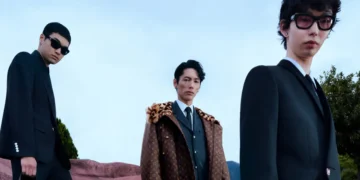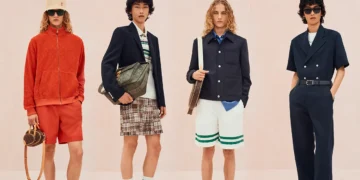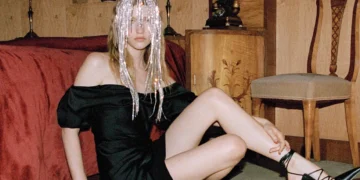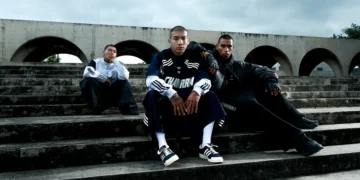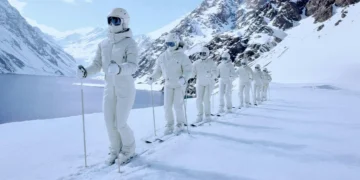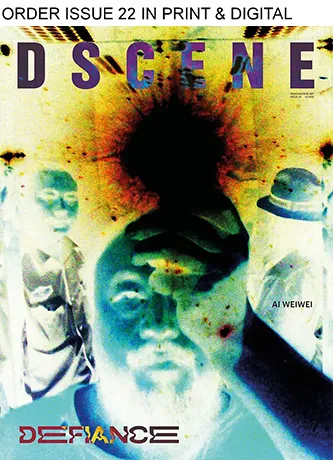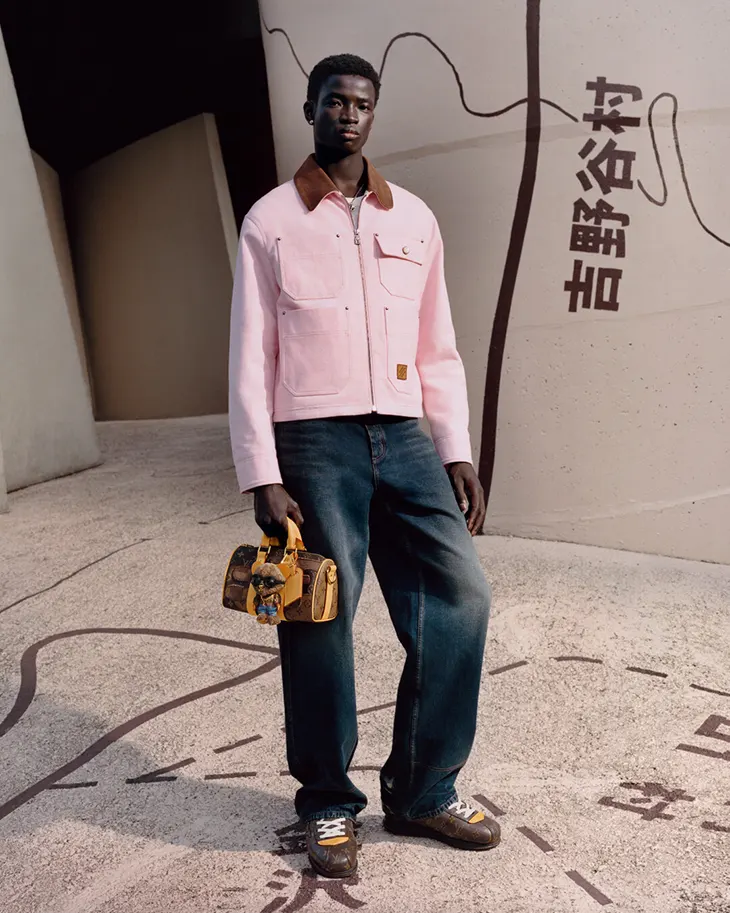
For Fall Winter 2025, Louis Vuitton’s menswear campaign moves beyond fashion into something closer to performance, an abstract exchange of memory, place, and collaboration. Co-designed by Pharrell Williams and NIGO, the collection finds its narrative footing through the lens of photographer Harley Weir, shot on location at the Site of Reversible Destiny in Yoro Park, Japan. A campaign of still and moving images unfolds where fashion and art meet on shifting terrain, and where a shared creative language is spoken fluently across garments and landscape.
The collection, described as a “Phriendship” between two long-time collaborators, doesn’t present a uniform aesthetic. Instead, it thrives on duality, between heritage and futurism, uniformity and eccentricity, Japanese tradition and Western tailoring. Dandy silhouettes, military references, and codes of streetwear are folded into each other. The garments carry hints of ceremonial precision and rebellious play, an echo of how Pharrell and NIGO themselves once blurred boundaries between luxury and culture.
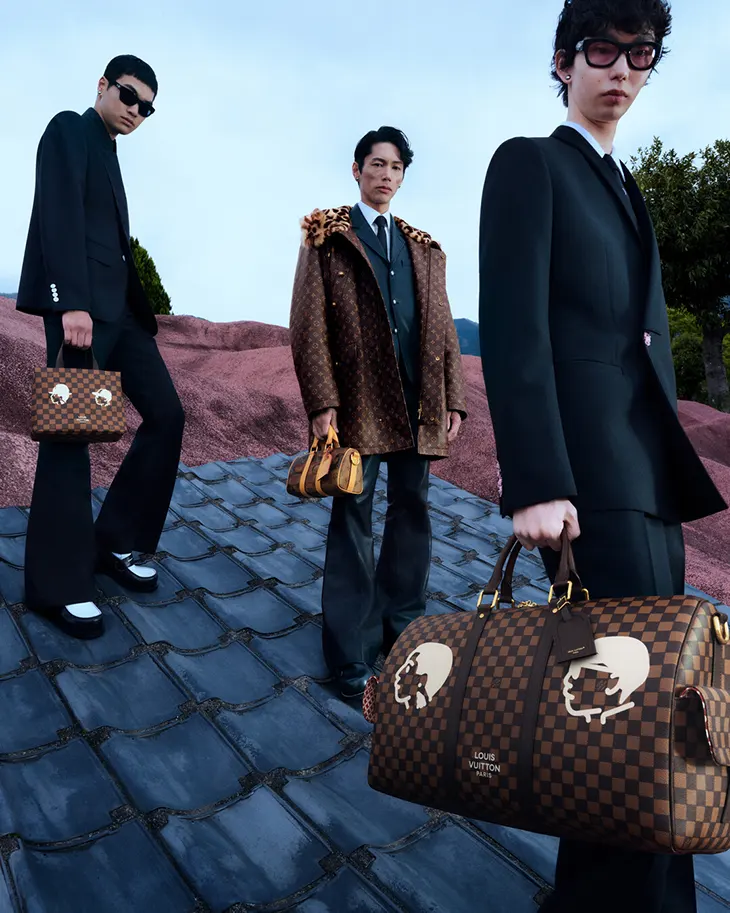
Worn by a cast of eclectic, art-oriented characters, the clothes appear embedded in their surroundings. The Site of Reversible Destiny, a surreal art park known for its undulating floors and open-air structures, acts not only as a backdrop but as a visual metaphor. Just as the site resists stability and forces one to reconsider direction, the collection challenges fixed interpretations of masculinity, dressing, and taste.
Textures are turned into topography. Tailored jackets in jacquard weaves, outerwear etched with intricate embroidery, and layers that remix kimono-inspired closures with contemporary detailing become visual anchors within the dreamlike architecture. Louis Vuitton’s codes of craftsmanship are in full display, but so is a sense of lightness, garments move, interact, and suggest wearability, even as they operate in the realm of the extraordinary.
The styling favors layered contradiction: utility garments paired with lavish accessories, suiting styled with sneakers, ornamental flourishes balanced by restraint. Pharrell and NIGO understand the power of image, and this campaign is filled with visual punctuation marks that underline their point: heritage isn’t static, and the present isn’t fixed. It’s in motion, relational, reshaped by every act of collaboration.
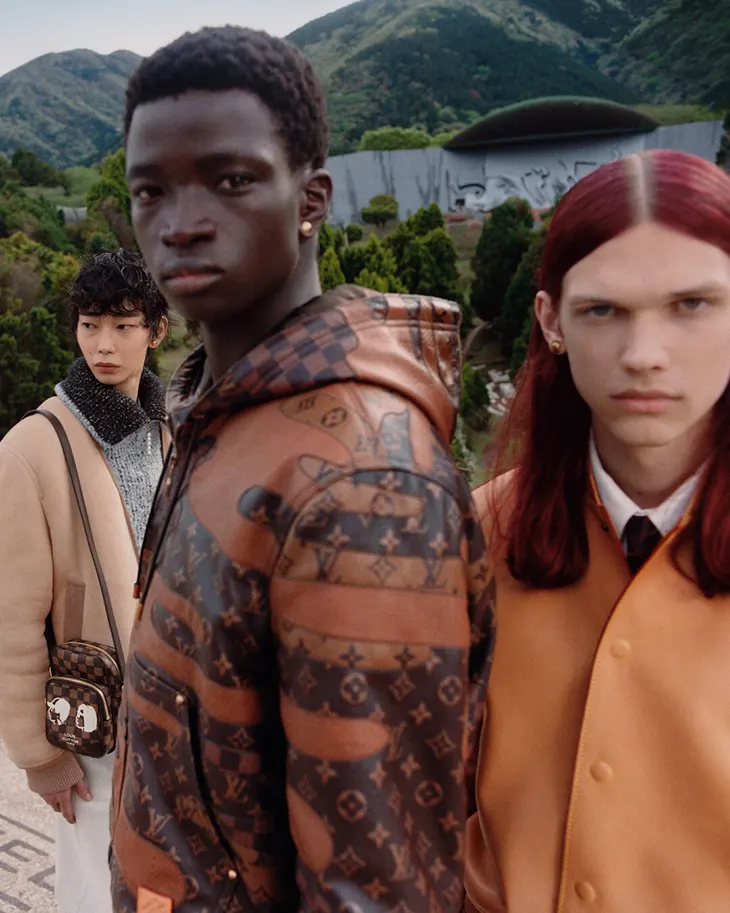
Soundtracked video vignettes accompany the stills, extending the campaign into time. The characters, stylish but approachable, serious but playful, move through the site with intent. Their clothes don’t just adorn; they animate. It’s here that the collection feels closest to its central message: a creative exchange rooted in personal history, expressed through global language.
In a season saturated with nostalgia and references, Louis Vuitton’s Fall Winter 2025 menswear campaign manages to feel alive. Not because it looks back, but because it lets the past shift and shimmer in new directions. What Pharrell and NIGO offer isn’t a tribute or a remix, it’s a conversation. And that conversation, framed through the surreal logic of Yoro Park and Harley Weir’s eye, becomes something altogether more cinematic: a portrait of fashion that thinks, moves, and remembers.

